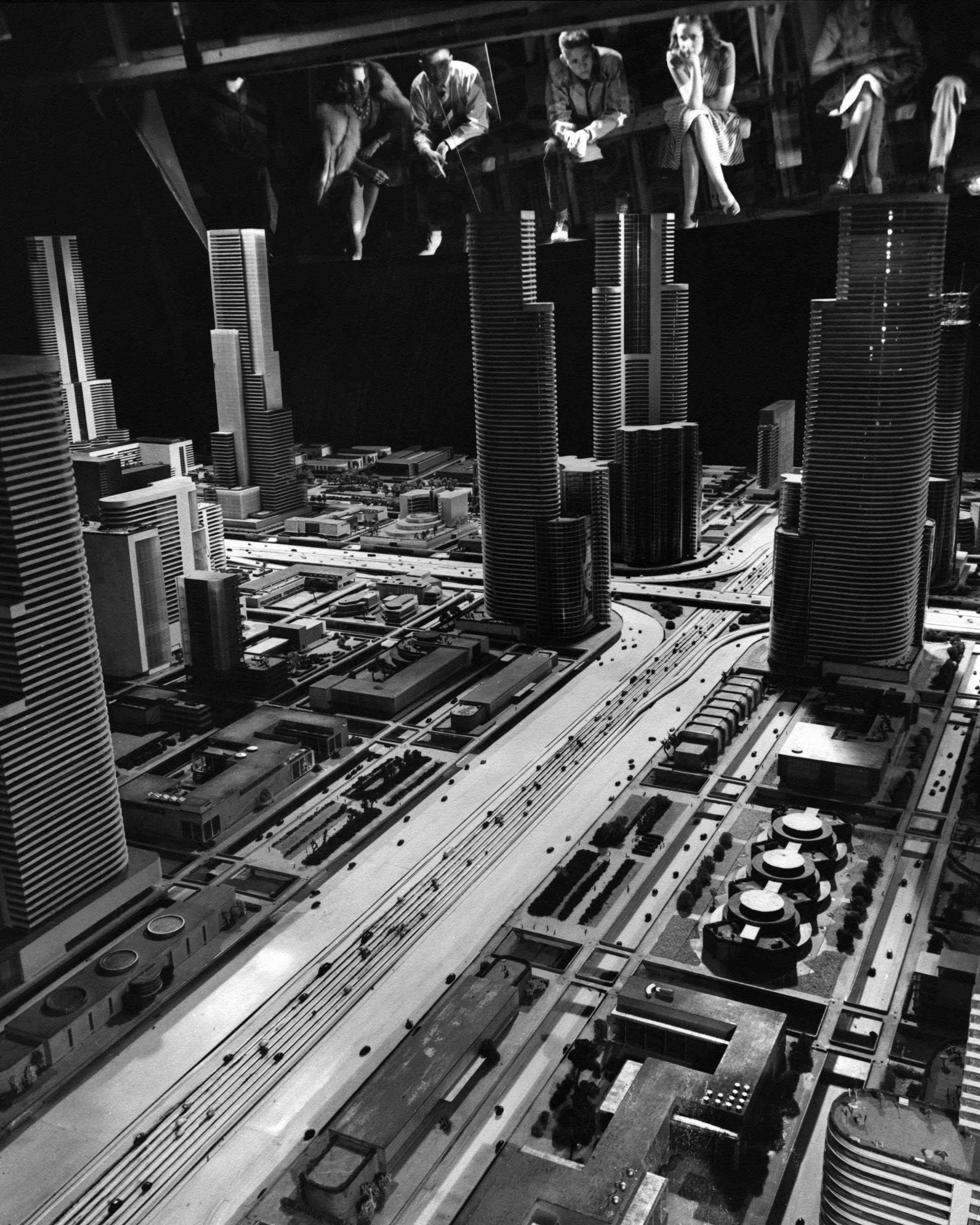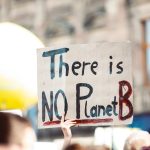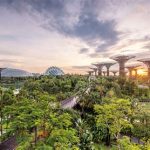An Essay on Urban Design – The Problem of the Automobile

This won’t be an article to convince you why we should battle climate change. Its effects are undeniable: there have been thousands of articles, essays and researches, both scientific and popular, and any thinking person knows that steps have to be taken to preserve our planet. Instead, this will be an article to look for how we should battle climate change. It is important to know what the biggest contributors to the effects are, and which options there are to change things, both for the public and for policymakers. One of the biggest factors: urban infrastructure.
On the 1939 New York World Fair there was a massively popular exhibit called Futurama. People would wait all day to see it, it received headlines throughout the entire country and it’s still is in popular culture today (the intro of Comedy Central’s Futurama comes directly from the exhibit). In essence, it was a huge maquette of 40.000 square meters, predicting American infrastructure for 1960 – 20 years in the future. It was mainly city, and contained 500.000 buildings (individually designed), a million trees and 50.000 motorcars. Visitors would sit in a hanging conveyor system, ‘flying’ over the massive maquette. The futuristic model involved GMO-farms, personal flying machines and modern power plants to form the ultimate ‘utopia’. However, by far most important was the highway system, which would offer a solution for the terrible congestion at the time. It was the top priority, and the designer would “always adhere to the four basic principles of highway design: safety, comfort, speed and economy.” And so he designed highways that would offer cars unrestrained driving, split up cities into strict neighborhoods with distinct uses, and bordered them with massive roads containing up to 14 lanes. It offered a view of prosperity and wealth to a country just recovering from the great depression.
However, the model was completely wrong. Cars do not necessarily bring prosperity, and mainly: they should not be the future for cities. Its maker was pretty good in predicting how American infrastructure would look like today, but that’s a negative thing. Mainly because of the climate, and partly because of social reasons. Many people argue that innovation would make it possible for us to keep using cars, because electric cars wouldn’t burden the environment. However, first there are the very polluting batteries in electric cars that oppose this reasoning, and even more convincing is the argument of car pollution not coming from fuel. A British report on air quality pointed out that 75% of particulate pollution by vehicles come from their tires and brakes, and from erosion of the road surface.
And with these arguments connects by far the most important reason for getting cars out of your plans: urbanization. While in 1900 only 14% of the world population lived in a city, that has gone up to 54% today. This has put an enormous pressure on the planet and gives us images of infinite smog and endless congestion, from all over the world. According to predictions, we will have 70% percent of the population living in cities by 2050, so 5 times more than one and half century earlier. In the same time, the absolute world population will have increased between 5 and 6 times, meaning nearly 6.5 billion people will live in cities by 2050. We already have cities like Karachi, Pakistan of 25 million, Jakarta, Indonesia of 30 million and São Paulo, Brazil of nearly 37 million inhabitants (measuring urban areas). How can we even control cities of such magnitude?
Lord Nicholas Stern, a well-respected climate economist and co-author of a 2014 paper to the UN climate summit, calls cities one of the three key areas we should manage regarding climate change, next to energy and land. His main point is transport: rapid urbanization means flexible and high capacity transportation, which leaves no room to cars. If every citizen drives his own car with each five seats, building more roads to catch up with urbanization is highly unsustainable, if not impossible. Reports and experts affirm this: cars simply limit your cities and your citizens’ health.
So if we shouldn’t think about better cars, but about fewer cars, that demands a totally different design of cities. It means connections between areas should be shortened, to create an incentive to walk. That can be done through appointing neighborhoods multiple purposes, offering high-quality public transport, and decreasing driving possibilities – basically through making the exact opposite of Futurama.
Jeff Speck, a leading American city planner and writer of ‘Walkable City’, presses for less cars and more pedestrians, and argues it to be ultimately a task for city planning. Especially in the U.S., cars are the norm. It harbors cities of enormous blocks divided for strict purposes, which demands drives from block to block. In its turn, that results in wide parking lots and massive roads, while still struggling with traffic jams. This shows that more road surface usually doesn’t solve congestion. Many statistics prove that when you build or expand roads, it sparks a so-called ‘induced demand’, and you incite thousands of latent trips, of people who earlier didn’t take the car because of the congestion. As a result, you end up with the same problem, but a less walkable city.
Speck points out that such a place is bad for the environment, bad for the community, and bad for people’s health. He shows a California statistical study in which doubling block size results in almost quadrupling fatal road accidents. Other examples he has, show that less incentives for car drives and better ‘walkability’ improve local economy, activity in the neighborhoods and happiness for citizens. The statistics are crystal clear: more sidewalks, smaller streets, more squares, and more mixed areas improve your city on basically every metric.
So before coming to a conclusion, first some examples to show the size of these challenges, and how we can actually implement our knowledge to battle climate change. The ultimate examples are these brand new cities, mainly in Asia, that just ‘emerge’ in a few years from nothing into million-people hubs. We know Shanghai, Bangalore and Dubai, but there are also places like Songdo and Shenzhen. You might not know them, but in Songdo, South Korea and Shenzhen, China, engineers have been trying to figure out the ‘perfect city’ from scratch. Shenzhen, possibly the future’s center of technology, is planning to replace its American style highways with tube-like tunnels lifted to a few stories, so that pedestrians have full room underneath and around them. Because Shenzhen is so new and its mindset very open and future-directed, plans like these can reach the discussion table. Shenzhen wants to be an example for other cities for the future, and knows that requires sustainability and options for pedestrians. The same counts for Songdo, which is still to be completed and one of the first ‘smart cities’. For its future inhabitants, Songdo strives to obtain the highest green label on every metric, and has embraced the concept of ‘aerotropolis’: the airport in the center, instead of a faraway industrial area. With a 12 kilometer bridge to the terminal, longer drives are spared. Its ‘friendliness’ for pedestrians is achieved through the many footpaths and parks: a stunning 40% of Songdo’s land area will be outdoor space. In regions where urbanization is extremely high and globalization is knocking on the door, there are amazing opportunities to build new cities greener than ever before.
However, most problems we encounter with car traffic and environmental damage occur in cities that already exist. We cannot simply relocate the airport of Beijing or New York, or replace entire neighborhoods with parks in Bogotá or London. But we can redesign more in those cities than often assumed. Another example is Barcelona, Spain, with its characteristic district of Eixample, containing hundreds of exact square city blocks. Barcelona was struggling with serious pollution and failed to reach EU norms. After a report that air pollution in the region caused 3.500 premature deaths each year, the city implemented the concept of ‘superilles’: 9 of those square city blocks together would make one square ‘superblock’, completely closed off to traffic. Inside would be space for pedestrians, shops or open air activities, with the intention to revive the community there, and encourage people to leave their cars at home. What convinced Barcelona to test this, was the success of another Spanish town called Vitoria-Gasteiz, in which ‘superilles’ massively increased pedestrian space and reduced CO2 emission and particle pollution by relatively 42 and 38 percent. Perhaps the trigger for other cities was the fact that with the superblocks, economic activity in Vitoria-Gasteiz grew, instead of declined.
To convince you once more that we can improve existing areas, a final example of the Netherlands. The Netherlands is very well known for its high population density and surprising urbanization over the past 50 years, and has more than doubled its amount of cars since 1980. This means that by now, almost one in every two Dutchmen has a car – despite most cars having room for at least five people. Dutch reports show that urbanization won’t stop and that further in the future, more infrastructure will be ineffective if the number of cars keeps increasing. For that reason, many cities have been encouraging two other options: public transport and cycling. Throughout the entire country, brand new train stations have been built and many cities are developing ‘high quality public transport lanes’. These lanes are solely reserved for buses (usually with wifi and mobile phone chargers) and cross as little traffic lights and junctions as possible. This way, taking public transport ought to be faster than taking a car and quite equally comfortable, so that more people will be attracted than just those who cannot afford a car. The same counts for cycling, which honestly, was to be expected from the Netherlands. With 17.000 kilometers of bicycle lanes it has the most of them in the world, despite the country’s size. Our own Groningen is quite an accomplishment as well: due to its students, 60% of human movement in the city happens by bike, which is a world record. With this head start, it aims to be a zero carbon city by 2035.
With some effort and some awareness of climate change, we appear to be quite successful in redesigning some of the most emitting sectors of the world. Even if we cannot design cities from scratch, we can still form them into the places we see fit for a prosperous future.
Why this hasn’t happened earlier and why so many countries and areas are still not on track, is a very relevant question. Part of the problem is the car industry and its lobbying, it is very rich and very influential. The entity behind Futurama that paid for the exhibit, was in fact not the government or some non-profit organization, but General Motors. Only now, climate change has become so pressing and visible, that city planners and policy makers are changing. Another factor is the problematic comparison of urban infrastructure with interconnecting freeways. It is important to have good infrastructure between cities so that people and goods can travel as fast as possible from one region to another, and freeways seem an agreeable option for that. However, within cities that is totally different, and many decision makers are not aware or not convinced of it. The lobbyists then worsen those misconceptions by arguing that innovated cars will solve pollution and bigger roads will solve congestion – more or less the false reasoning behind Futurama.
But with some logical information, and most importantly with aspiration, we can debunk that Futurama reasoning. We can press for the redesign of our cities, and make them more vibrant, more pleasant, and most of all: more sustainable. As Lord Nicholas Stern pointed out: managing urbanization is one of the key points in battling climate change. This is not a topic just for city planners, but for everyone concerned with our planet’s future. It links with the economic hubs of tomorrow and all-encompassing developments like globalization and urbanization – definitely something for International Relations too. We have the opportunities now to design cities that are both sustainable and supporting further civilization. Let’s just do that without cars.
If you’re interested in the future of urban design, this fast paced and very opportunistic video might be a great closure.




Hi! Do you have any information on the image here? I would like to use it in an exhibition but can’t find its attribution. Thanks!